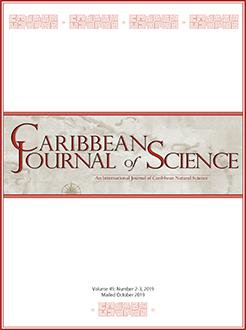Geomicrobiology is an interdisciplinary field which studies the impact of microbes in a given geologic environment. Besides understanding the role of microbes in processes such as mineral degradation, organic matter mineralization, and biogeochemical cycles, the presence of microbes as part of the indigenous population of contaminated areas can be used as a tool for in situ treatment and removal of heavy metals from contaminated sites. In order to isolate fungal bioprospects capable of growing on Copper (Cu) contaminated areas, samples were collected from soils in Puerto Rico. After performing serial dilutions, the samples were spread on plates supplemented with Cu (CuSO4) at concentrations from 0 - 1M. Only one microorganism was able to grow on medium supplemented with 35 mM Cu2+, a filamentous fungus of the genus Aspergillus. Taxonomic classification suggests the fungus was Aspergillus versicolor. At 35 mM of Cu, atypical growth of the fungi was observed, including changes in pigmentation and colony size. Hyphal morphology also changed and the presence of asexual reproductive structure such as conodiophores was not observed. In addition, Scanning Electron Microscopy study revealed the presence of spherical filamentous structures of unknown composition. Previous reports of Cu resistant Aspergillus sp. have described species such as A. niger and A. fumigatus, but to our knowledge this is the first report of an A. versicolor capable of growing at the Cu concentrations as high as the ones described in this study.
How to translate text using browser tools
22 October 2019
Characterization of a Puerto Rican Isolate of Aspergillus sp. with High Copper Resistance
V. Z. Cardona-Cardona,
Y. Loperena-Alvarez,
G. Ramos-Marrero,
J. Schellekens,
C. Ríos-Velázquez
ACCESS THE FULL ARTICLE

Caribbean Journal of Science
Vol. 49 • No. 2-3
October 2019
Vol. 49 • No. 2-3
October 2019
18S rDNA
Aspergillus
Copper resistant fungi
Geomicrobiology




